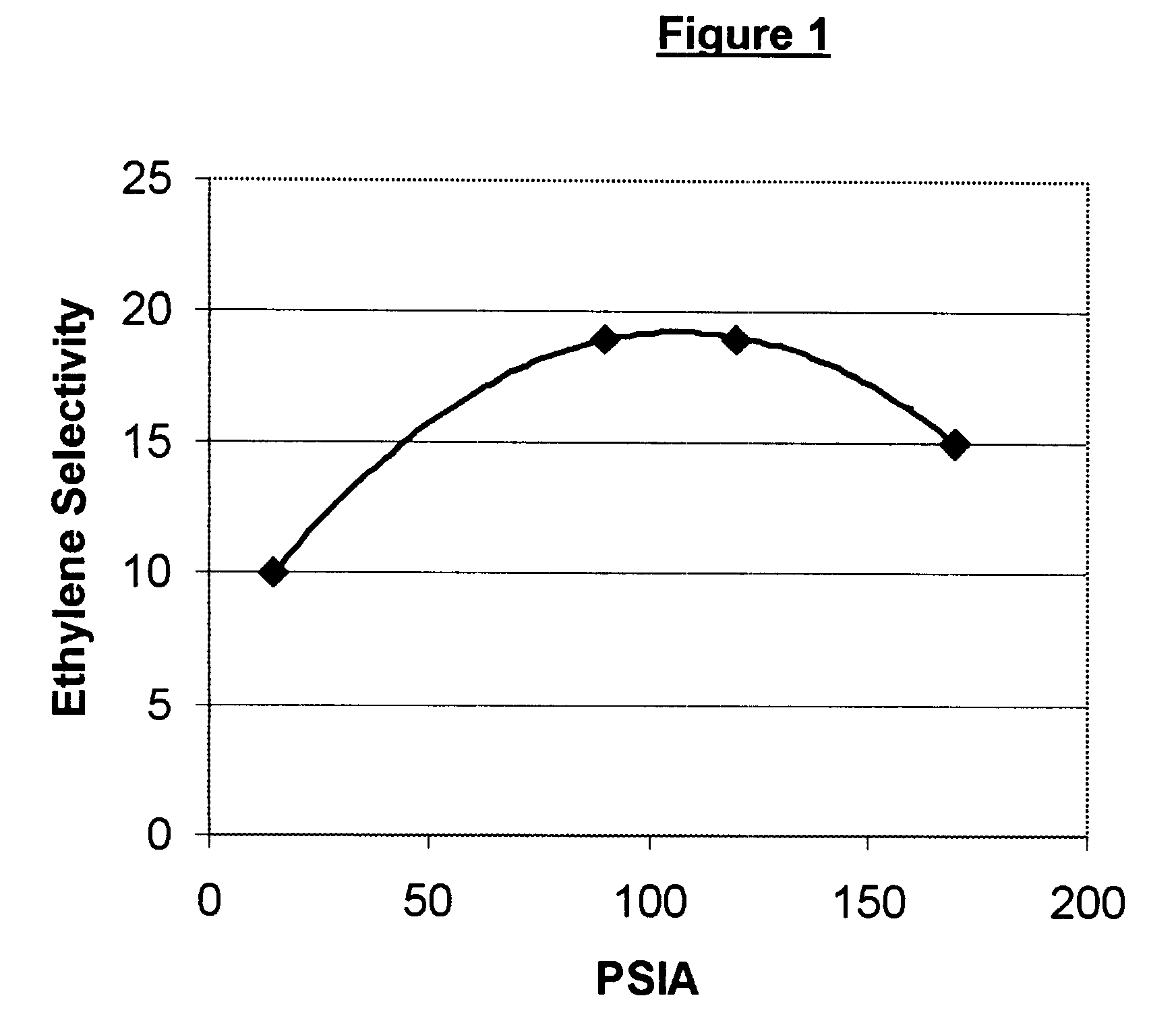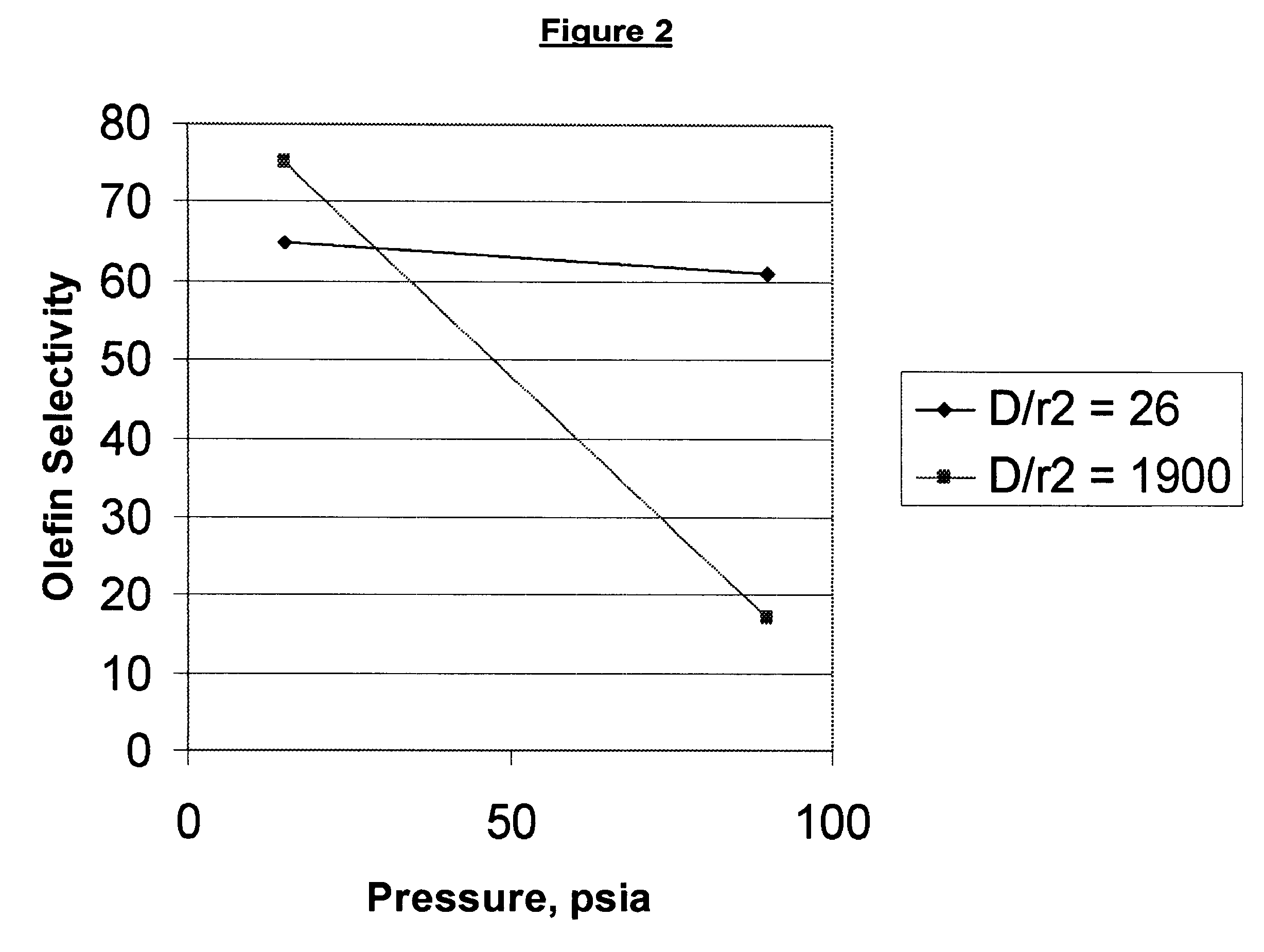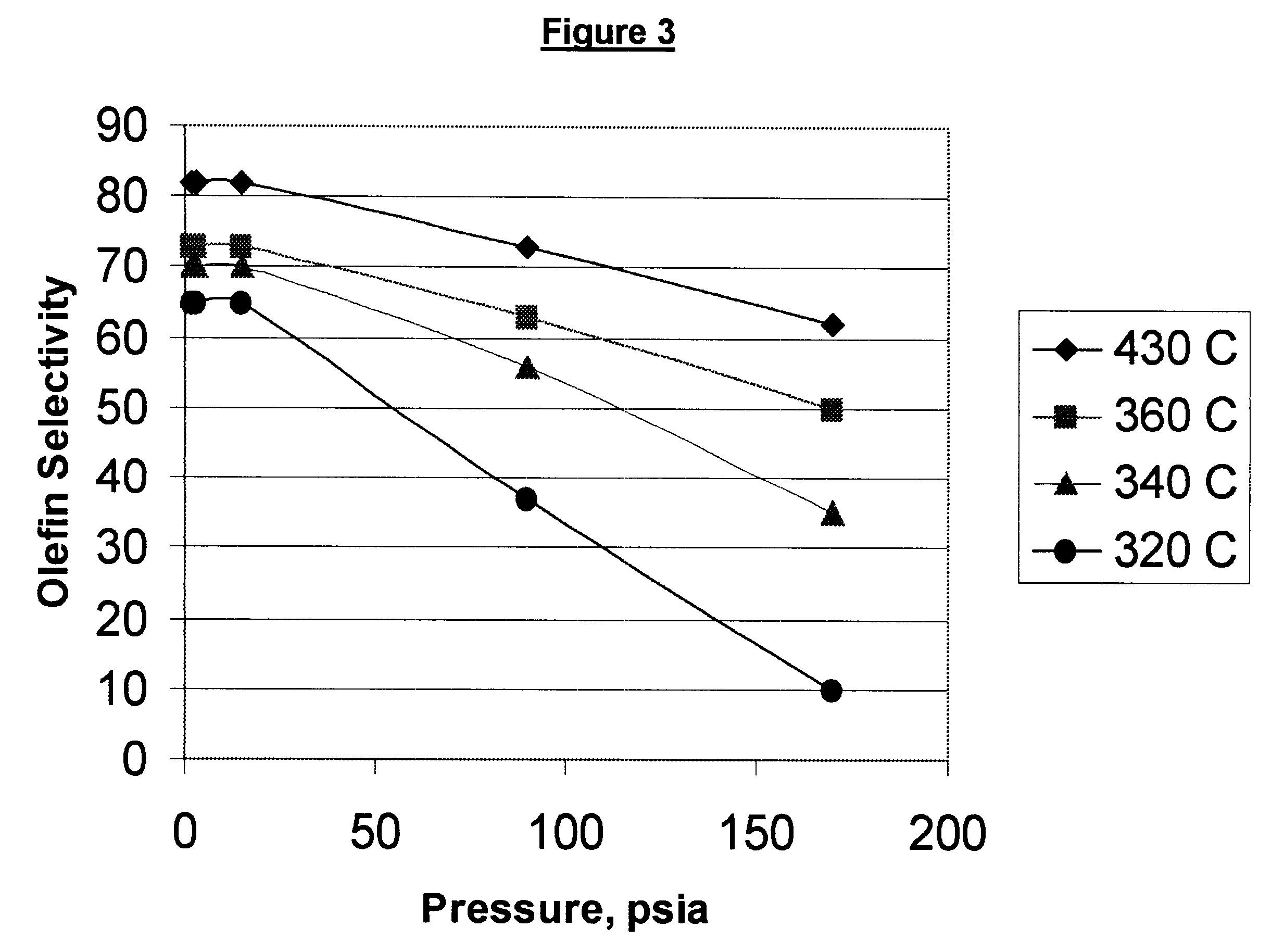Process for converting methanol to olefins
a technology of olefins and methanol, which is applied in the direction of organic chemistry, chemical apparatus and processes, hydrocarbon preparation catalysts, etc., can solve the problems of reducing the yield of perpass ethylene and hence the overall efficiency of the process
- Summary
- Abstract
- Description
- Claims
- Application Information
AI Technical Summary
Benefits of technology
Problems solved by technology
Method used
Image
Examples
example 4
This Example employed a commercially available FCC additive catalyst containing 26:1 SiO.sub.2 :Al.sub.2 O.sub.3 molar ratio ZSM-5 in a binder to zeolite weight ratio of 75:25 and containing about 3 wt % P. The catalyst had been pre-steamed at 790.degree. C. (1450.degree. F.) for 4 hours such that the catalyst tested had an alpha of about 3, a diffusion parameter of 25, and a n-hexane sorption of 25 mg / g. The catalyst was used to convert a mixture of 90 wt % methanol and 10 wt % toluene (methanol:toluene molar ratio of 26:1) at various temperatures and pressures.
The total olefin selectivity under each condition at a methanol conversion level of about 70% is shown in FIG. 3. It will seen from FIG. 3 that, with the toluene cofeed, at all the temperatures tested the total olefin selectivity is independent of pressure out to 15 psia then decreases with pressure out to 170 psia methanol partial pressure, with the decrease being less pronounced at 430.degree. C. than at 320.degree. C.
Tabl...
example 5
The catalyst from example 1 was used to convert methanol at 430.degree. C. and 90 psia methanol partial pressure. The results are given in Table 5.
example 6
Phosphoric acid, kaolin clay, and 450:1 SiO2 / Al2O3 ZSM-5 were slurried in water and spray dried to make a fluid--bed catalyst. The catalyst was calcined in air at 510.degree. C. The finished catalyst contained 40 wt % ZSM-5 and 4.5 wt % phosphorus. This catalyst was then steamed at 1050.degree. C. (1920.degree. F.) for 0.75 h, after which treatment it had an alpha of about 1, a diffusion parameter of 0.5, and a n-hexane sorption of 31 mg / g. This catalyst was used to convert methanol at 430.degree. C. and 90 psia. The hydrocarbon product selectivities are reported in Table 5.
The examples of Table 5 are attractive targets for commercialization. Example 6 produces ample petrochemicals at attractive process conditions using a selectivated ZSM-5 catalyst. Most of the other hydrocarbons produced are conveniently converted to high octane gasoline. Example 5 produces more gasoline and less chemicals, but uses a less expensive catalyst.
PUM
| Property | Measurement | Unit |
|---|---|---|
| temperature | aaaaa | aaaaa |
| pressure | aaaaa | aaaaa |
| temperature | aaaaa | aaaaa |
Abstract
Description
Claims
Application Information
 Login to View More
Login to View More - R&D
- Intellectual Property
- Life Sciences
- Materials
- Tech Scout
- Unparalleled Data Quality
- Higher Quality Content
- 60% Fewer Hallucinations
Browse by: Latest US Patents, China's latest patents, Technical Efficacy Thesaurus, Application Domain, Technology Topic, Popular Technical Reports.
© 2025 PatSnap. All rights reserved.Legal|Privacy policy|Modern Slavery Act Transparency Statement|Sitemap|About US| Contact US: help@patsnap.com



